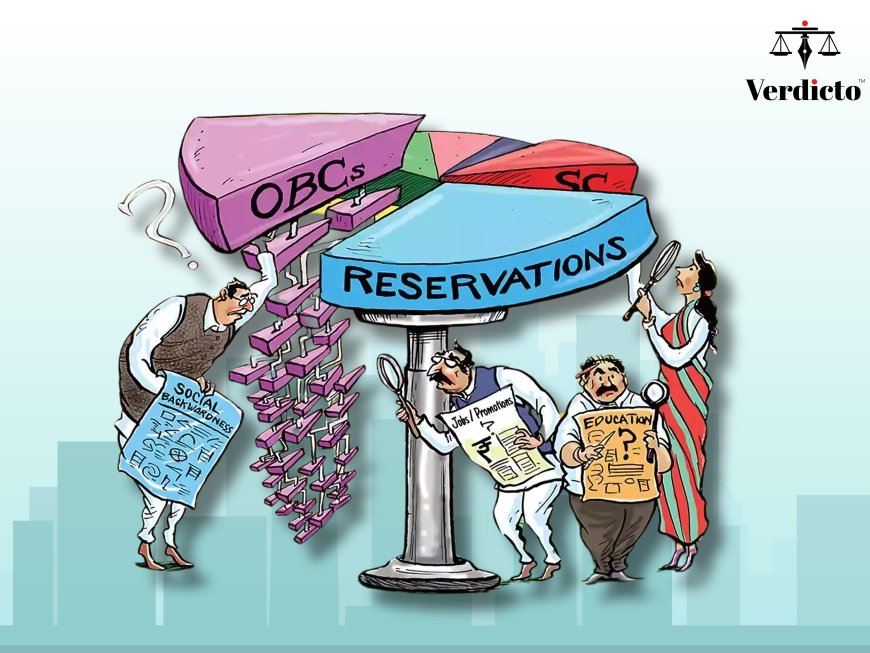Bihar’s Reservation Policy: Legal Battles,Political Heat and a Nation-Wide Echo
Bihar’s revised reservation policy sparks legal challenges and political controversy, fueling a broader national debate on caste-based quotas and social justice.

Bihar’s controversial move to raise reservations in public education and government jobs from 50% to 65% has triggered a legal and political face-off, now pending before the Supreme Court. While the state government defends the policy citing caste census data, courts and critics argue it violates constitutional limits—setting the stage for a landmark verdict with far-reaching implications.
What Sparked the Controversy?
On November 9, 2023, the Bihar Legislative Assembly passed two significant amendments:
-
Bihar (Admission in Educational Institutions) Reservation (Amendment) Act, 2023
-
Bihar Reservation of Vacancies in Posts and Services (Amendment) Act, 2023
These laws increased quotas for EBCs, OBCs, SCs, and STs to a combined 65% (see image), citing findings from the Bihar Caste Survey (2022–23), which revealed that 85% of Bihar’s population belongs to backward or marginalized communities.
However, this expansion brought the total reservation—when including 10% for Economically Weaker Sections (EWS)—to 75%, far exceeding the 50% cap established by the Indra Sawhney v. Union of India (1992) judgment.
Patna High Court Steps In
On June 20, 2024, the Patna High Court declared the amendments unconstitutional, calling them “bad in law” and in violation of the equality clause of the Constitution. The Court criticized the state for:
-
Relying solely on caste-based population data without examining economic and educational status
-
Failing to conduct any scientific or expert study before enacting the laws
-
Ignoring that backward communities already represented 68.5% of government posts, thereby negating the need for further affirmative action
The High Court emphasized that merit cannot be sacrificed, and there was no valid “extenuating circumstance” to breach the 50% ceiling.
Supreme Court Intervention: Notice Issued, No Stay
In response, the Bihar government approached the Supreme Court in July 2024, urging a stay on the High Court order. The state, now governed by a JD(U)-BJP coalition, defended the 65% quota as a necessary correction of historical imbalance and submitted that 98 lakh families from backward communities earned below ₹6,000 per month.
Yet, the Supreme Court bench led by CJI D.Y. Chandrachud refused to grant interim relief and scheduled a detailed hearing in September 2024.
On September 6, 2024, the Supreme Court issued notice to the Centre and the Bihar government on a separate petition filed by the Rashtriya Janata Dal (RJD), which challenged the Patna High Court order. While the top court agreed to tag the RJD’s plea with the state’s pending appeal, no stay was granted on the High Court verdict, keeping the reservation hike on hold.
The Supreme Court’s decision to hear the matter without granting interim relief has left the future of Bihar’s new reservation regime hanging in the balance.
RJD and the Politics of Quotas
RJD leader Tejashwi Yadav, former Deputy CM and current Leader of the Opposition, has kept the issue politically charged. In a letter to Chief Minister Nitish Kumar, Yadav demanded:
-
A special session of the Assembly
-
New legislations to raise quotas to 85%
-
Placement of the new laws in the Ninth Schedule of the Constitution to shield them from judicial review
He cited Tamil Nadu’s 69% reservation, which has been protected under the Ninth Schedule since 1994, as a model Bihar could follow.
Yadav accused the BJP of “deliberately dragging its feet” and linked the opposition to an “anti-reservation RSS ideology,” adding a strong ideological undertone ahead of the state elections later this year.
Other States and the Ninth Schedule Strategy
Bihar isn’t alone in its push to breach the 50% ceiling. Chhattisgarh reintroduced a 58% quota after the Supreme Court stayed a 2012 High Court judgment that had blocked it. Tamil Nadu has long maintained its 69% quota by placing it under the Ninth Schedule, though the Keshavananda Bharati case (1973) leaves room for judicial review even for such laws.
These examples strengthen calls from opposition parties to invoke similar constitutional protections for Bihar’s legislation.
Caste Census and Electoral Stakes
The recent announcement of a nationwide caste census by the Union Government has added fresh urgency and significance to the quota debate. With the Bihar Assembly elections due later this year, caste arithmetic and social justice narratives are once again becoming central campaign themes.
The Bihar caste survey revealed that:
-
36% belong to Extremely Backward Classes
-
27.1% to Other Backward Classes
-
19.7% to Scheduled Castes
-
1.7% to Scheduled Tribes
-
Only 15.5% belong to the General Category
These figures provide ammunition for both political mobilization and legal arguments in favor of revising India’s reservation structure.
A Defining Moment for India’s Affirmative Action Framework
The Bihar reservation saga is more than a state-level dispute—it is a test case for how India’s legal, political, and constitutional frameworks grapple with the realities of caste, equity, and merit. As the Supreme Court prepares to hear the case in detail, its outcome could redefine affirmative action policies not only in Bihar but across the country.
With the 2025 Bihar Assembly elections looming, all eyes remain fixed on the court—and the street—as India reopens its long-standing debate on social justice versus constitutional boundaries.







